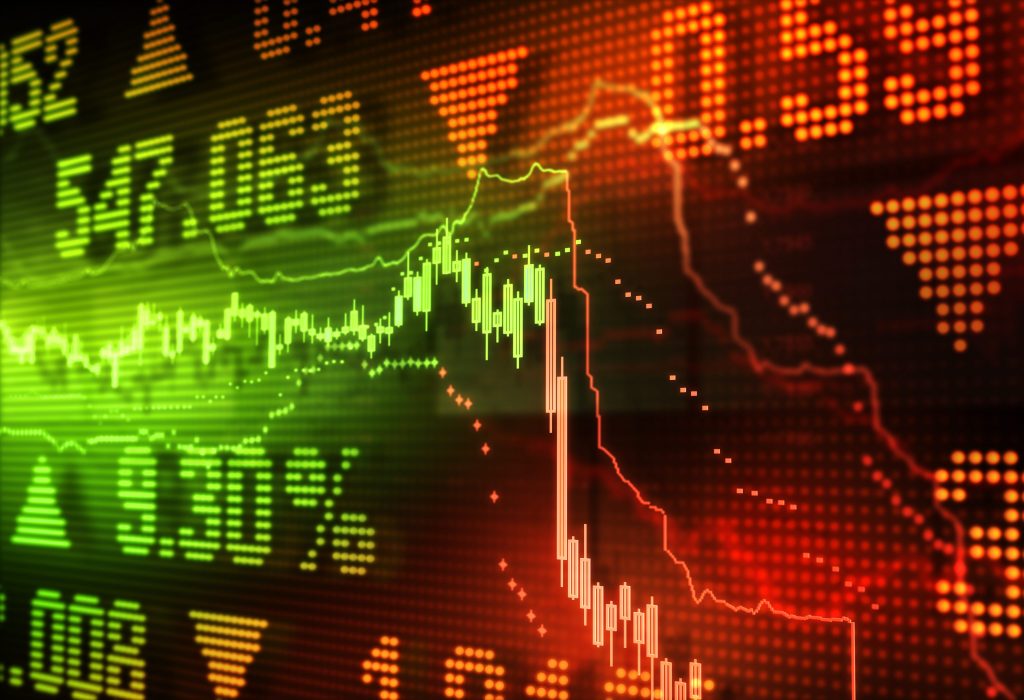US investment bank, Goldman Sachs put consumers on notice.
If they see credit quality decline, they’ll slow consumer lending all together.
At the same time, the Bank of England is sounding the alarms on high risk debt. ‘The global leveraged loan market is larger than — and growing as quickly as — the US subprime mortgage market was in 2006,’ the Bank told investors.
If you’re unfamiliar with the fixed income market, this is the debt too risky for banks to keep on their balance sheet. It’s the debt that poisoned the US economy during the 2008 meltdown.
Combined, the US and EU leverage loan market tops US$1.3 trillion.
Adding to concerns of credit drying up is the US Federal Reserve. They continue to sell bonds in the background.
Two days ago, the Fed off-loaded US$40 billion worth of four week treasury bills (T-bills). They sold another US$25 billion worth of two-month T-bills.
Add a costly trade war on top of that. According to former NZ central bank governor, Alan Bollard, tariffs are finally taking their effect. Bollard wrote:
‘The resulting breakdown in bilateral trade talks and escalation of tariffs and other protectionist barriers by the US and China is beginning to hurt both economies.
‘The fallout comes from increased production costs, which will impact shareholders, workers and consumers, sometimes in roundabout ways. Producers are looking to reconfigure increasingly complex supply chains to avoid tariff penalties. Purchasing managers are ramping up inventories just in case. Factory owners are considering relocation for cheaper options. Financial investors are reassessing country risks.’
Things really seem to be heating up.
And if the worst does happen, I want you to do this…
How to build your financial storm shelter
Above could be what sets off the next recession.
That’s according to fixed income manager, PIMCO. Joachim Fels of PIMCO said:
‘You could argue the last two recessions, in 2008-09 and the one in the early 2000s, were caused by a sharp correction in asset prices rather than the other way around.
‘In the old days you would have said this is like the tail wagging the dog; you could argue now that financial markets are the dog and the economy is the tail in the sense that financial markets are so big and the financial transactions and asset valuations are so much larger.’
Meaning a short, sharp decline in stock prices could cause a chain reaction for something bigger: a full blown recession.
Fels doesn’t expect this to happen overnight. But a likely scenario might involve climbing interest rates, slowing earnings and a big sell-off to spark fears.
At that point, human nature takes over. Billions start to pour out of the stock market and into safe assets or even cash.
But rather than run for the hills, I want to implore you to stay in stocks.
Don’t get spooked. Don’t turn and run with the herd.
Sure, you might want to trim your portfolio. Hold onto the stocks you really believe have bright futures and maybe sell some of your speckies. That way, you’ll have a bit of cash if stocks do head towards bargain territory.
But recession or no recession, correction or no correction, you can’t keep a wonderful company down. [openx slug=inpost]
Can’t keep a good stock down
I would argue Netflix, Inc. [NASDAQ:NFLX] is one such company.
You may have heard the streaming giant proved analysts wrong…again. In the third quarter, Netflix added 6.69 million new subscribers to their network.
All up, they’re now 137.1 million subscribers strong.
According to Bloomberg, analysts have missed subscriber numbers by almost two million.
|
Source: Bloomberg |
‘This quarter, the company expects to sign up 9.4 million new subscribers globally, far above the 7.18 million average of forecasts compiled by Bloomberg. In the U.S., where Netflix can now claim almost half of households as users, the company expects to add 1.8 million new customers this quarter, bringing the domestic total to 60.3 million,’ Bloomberg wrote.
If you remember, it wasn’t that long ago analysts thought earnings, as well as the stock price, would tumble. The company spent billions on original content. According to Variety, about 85% of all new spending in 2018 was for original content.
This was a cost that analysts believed Netflix could not sustain.
But look at what it’s done for profits.
|
Source: Bloomberg |
I’d argue that the billions spent on content was one of Netflix’s best investments. Think about it. What encourages someone to subscribe to Netflix rather than Stan or some other competitor?
Content. Content is king.
If Netflix has better content that’s exclusive to their platform, more people want Netflix. OK, so reverse engineer the problem, how do you get better content than anyone else?
The way Netflix has done it is by shifting through billions of hours streamed. Netflix has a ton of data on what their users are watching and what they like.
This information then creates ideas for new content. And rather than getting someone else to produce it, Netflix cuts out the middle man and does it themselves.
After a while, this becomes a virtuous cycle. More people subscribe to Netflix to watch the latest award-winning programs, giving Netflix more data to create better shows.
It’s a competitive factor that Netflix has over most other competitors. And it’s also why subscriber numbers, sales and profits have all rocketed.
Now, I’m not saying, ‘go out and buy Netflix’. What I’m saying is, build up a knowledge bank of Netflix-like companies, which you can buy once their stock price drops to a level you’re comfortable with.
That way, you’ve got something to do (other than sell) if a correction or recession hits.
Your friend,
Harje Ronngard

